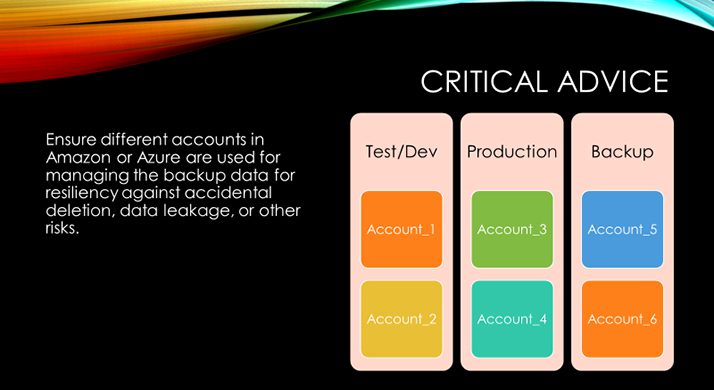Optimize data protection and digital transformation with cloud:
Better data protection leads to better data availability.

IDC research shows that 60% of organizations have embarked on a digital transformation (DX) journey. The purpose of a DX strategy is to create a “data-driven” organization that delivers faster, more accurate information to business leaders, resulting in business plays that outsmart the competition. Simply put, the organization with the best data availability is going to have the inside edge.
Data protection, in particular, has evolved from a simple, reactive restore of data to proactive data availability. Moreover, backup data sets are being leveraged for added value such as development testing, staging, data mining, analytics, and more.
Better data protection leads to better data availability. IDC research shows that many organizations understand this, as 50% of DX projects include data protection modernization, and 30% of their budgets are allocated to this effort.
While data availability is foundational to DX strategies, the key to success is making the connection between the data and the business decision-makers. IT plays a key role in making this connection by selecting the platforms and methodologies for delivering data.
Business leaders know what data they need, and IT knows how to deliver it. In addition, a new class of data consumers is emerging: data scientists, data architects, and data operators. This new group is tech-savvy, aligned with business requirements, and can bridge the gap between technology and people.
Data protection leading the way to cloud
At the same time, IDC finds that 70% of CIOs claim a “cloud-first” strategy. Our research also indicates that data protection is the most common cloud entry point, as 90% of organizations intend to use the cloud for some portion of their data protection strategy within the next 12 months.
The most common architectures include:
- Hybrid cloud – Backup data is migrated to the cloud either by replication or “cloud tiering” software, yielding one data copy on-premises and one data copy in the cloud. This model assures data survivability in the event of on-premises disruptions.
- Backup as a service (BaaS) – Backup and recovery is provided by a cloud service provider (CSP) on a subscription basis and is usually fully managed by the CSP. The IT organization is relieved of the hassle of managing the backup infrastructure while gaining all the benefits of two-site data protection.
- Disaster recovery as a service (DRaaS) – Also provided by a CSP, DRaaS uses backup data to stage DR operations. DRaaS is a game-changer, because it makes DR affordable due to on-demand provisioning of resources.
- Archive as a service (AaaS) – Moving data to the cloud for archiving can take advantage of very low cost per GB cloud storage and relieve the IT organization of managing the archiving infrastructure.
3 key metrics that guide infrastructure selection
Regardless of architecture, our best practice recommendation is that IT organizations manage the metrics of particular service-level agreements (SLAs). Having SLA targets helps to determine exactly what infrastructure is needed to meet contract requirements. The three most common SLA benchmarks include:
- Data availability (or application availability) – Also known as “uptime,” this SLA measures how much time an application is available to end users. So-called “five nines” or 99.999% up time means less than five minutes of downtime per year. “Three nines” or 99.9% means 25 minutes of downtime per year. The higher the “nines,” the more expensive the supporting infrastructure. However, IDC estimates the average cost of unplanned downtime to be $250 per hour, so this cost must be weighed against the cost of infrastructure for higher uptime. This clearly has a direct impact on DX results.
- Recovery point objective (RPO) – RPO measures the amount of data an organization is willing to lose due to a service disruption. The current best-practice RPO is 15 minutes.
- Recovery time objective (RTO) – RTO measures the total time needed to recover from a service disruption. The current best-practice RTO is one hour.
Conclusion
Modernizing data protection is foundational to a successful digital transformation. Not every organization that pursues DX will be successful. But those who are will be rewarded with a competitive advantage and likely market leadership in their sector.
Learn more about data management and protection platforms in the cloud.
* All data cited in this blog is based on IDC research reports.
About the author
Phil Goodwin is a Research Director within IDC’s Enterprise Infrastructure Practice, covering research on data management. Mr. Goodwin provides detailed insight and analysis on evolving industry trends, vendor performance, and the impact of new technology adoption.




